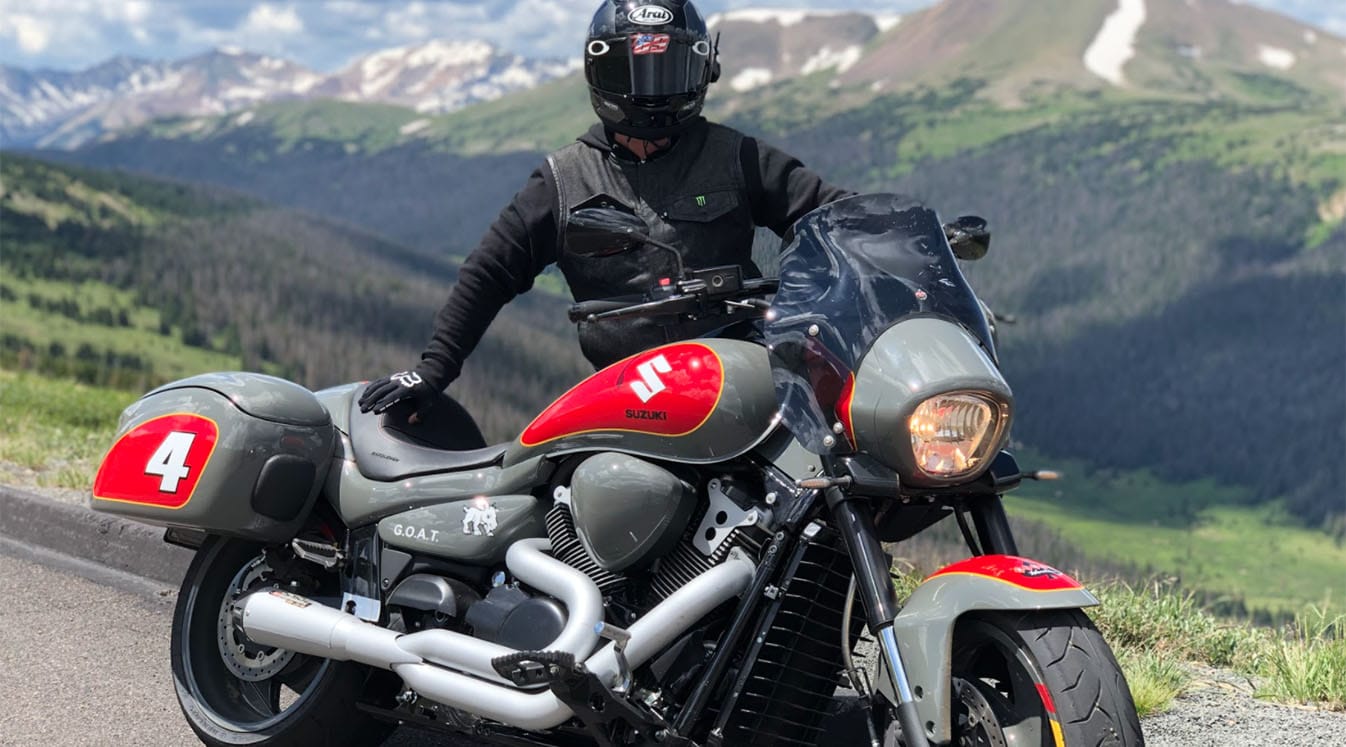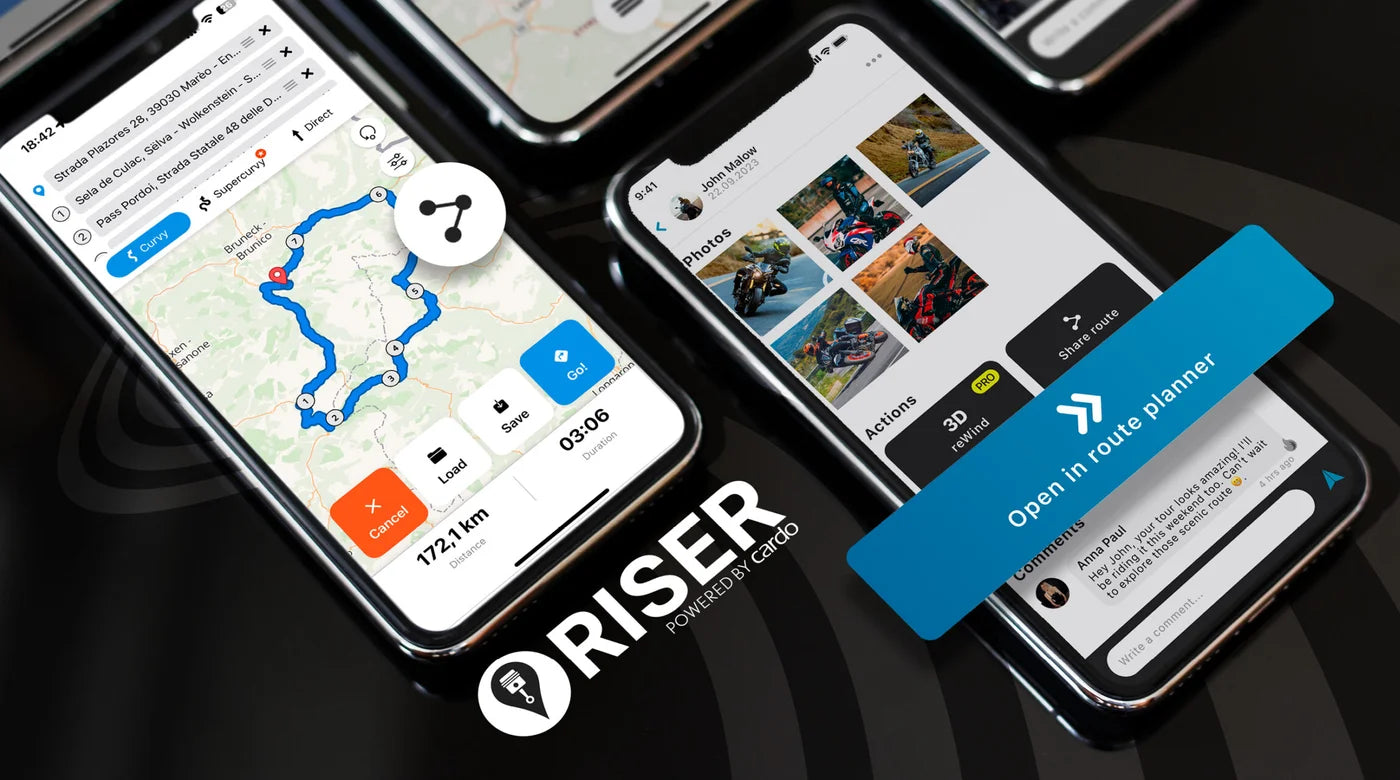In your shoes, your clothes and your life, finding the right fit is one of the major keys to happiness. So when it comes to the motorcycle you’re going to spend the next several years (at least) riding and enjoying, you need to be sure that you’ve found the right fit as well.
What’s the right motorcycle size for you? In this article, we’ll discuss motorcycle sizes, key factors that affect a bike’s comfort and how to adjust a bike that doesn’t fit quite right.
Why It’s Important That Your Motorcycle Fits Right
The rider and the motorcycle need to function as a single, integrated unit. If your motorcycle and your body fit awkwardly together, you’re going to have a more difficult time controlling the bike and concentrating on the road.
Size mismatches can manifest in all kinds of potentially dangerous ways. You might find that you have to work too hard to reach the controls, making your reaction time longer and your handling less assured. (Getting a hands-free motorcycle helmet Bluetooth headset can help you communicate and free up your hands more, but it won’t make your arms any longer!)
If the bike is too tall or heavy for you, maneuvering at low speeds will also be more difficult. You need the use of your feet when you’re sitting at a light or in stop-and-go traffic, and these are some situations in which it’s easiest to drop your bike if you don’t have the maneuverability you need.
Motorcycle Ergonomics for Comfort and Safety
Proper motorcycle ergonomics contribute to a comfortable and safe ride. New riders and experienced riders alike should consider these factors to ensure their bike fits well. Here’s a breakdown of the main components that contribute to motorcycle ergonomics:
- Handlebar positioning: Ensure your handlebars are positioned for a comfortable grip, avoiding overreaching or straining. Adjustable or aftermarket options can help achieve the ideal setup for both commuting and off-road riding.
- Footpeg placement: Footpegs should allow for a relaxed knee bend and easy reach to the ground. Adjust them to suit different rider heights and preferences.
- Seat shape and height: A well-designed seat provides support and comfort. Seat height affects your ability to reach the ground and maintain proper posture, which is crucial for long-distance rides and when maneuvering at low speeds.
- Tank shape and size: The fuel tank’s contours should allow for comfortable knee placement without causing strain, enhancing overall rider comfort.
- Windscreen and fairings: Adjusting the height and angle of motorcycle windscreens can reduce wind resistance and rider fatigue.
- Suspension: An adjustable suspension system helps absorb road imperfections and improves comfort. This is particularly important for off-road and touring bikes.
- Control placement: Ensure brake and clutch levers, as well as foot controls, are within easy reach for comfortable operation.
- Overall riding triangle: The combination of handlebar, seat and footpeg positions creates the riding triangle, determining your overall posture. Different bike styles — from Harley-Davidson to scooter-style — have varying setups to suit their intended purposes.
Understanding and optimizing these ergonomic factors will make your riding experience more enjoyable, ensuring it's less fatiguing. Whether you’re on your first bike or upgrading to a new bike with a larger motorcycle engine, these are factors to take notice of. Adjusting for engine size, bike’s weight and specific riding needs will ensure a better fit for all motorcyclists, whether you prefer smaller engines or are gearing up for long adventures on touring bikes.
Motorcycle Types by Size and Height
There are many different types of motorcycles, and each offers something a little bit different when it comes to the bike’s height and weight:
- Cruisers feature some of the lowest seats of any type of motorcycle, which helps them fit a variety of body types and sizes. They’re heavier than sport and adventure bikes, but most are still light enough that the average rider will find them manageable. However, the leaned-back sitting position of a cruiser means that the controls may be hard to reach for people with short arms.
- Standard motorcycles typically have a mid-level seat that’s not extremely low or high. The large variety of standard models on the market makes it easier to find something that fits out of the box, and most standards are also relatively light in weight.
- Sport motorcycles have relatively high seats to give them better cornering ability, which can be challenging for shorter riders. Their leaned-forward riding position, however, makes it easier to access the controls. Weight-wise, sport bikes are on the lighter side.
- Touring motorcycles have low seats that are designed for maximum comfort on extended rides. However, they are also among the heaviest of all motorcycles, and thus aren’t usually recommended for beginning riders.
- Adventure or dual-sport motorcycles have higher seats inspired in part by dirt bikes. Again, this can be a problem for shorter riders. But, like sport bikes, adventure bikes are typically fairly light, with springy suspensions that compress more under a rider’s weight.
How a Motorcycle Should Fit
The best way to evaluate whether a motorcycle fits is to sit on it for yourself. Once you’re in the saddle, take notice of the following things:
- You should comfortably be able to at least touch the toes on both feet to the ground. If you’re buying your first motorcycle, it’s much better if you can stand firmly flat-footed.
- It should be easy to get the motorcycle up off its kickstand and back down onto it without struggling with the weight and height.
- All hand controls (throttle, clutch, etc.) should be within easy reach without having to stretch.
If you’ve got a particular model in mind, you can use the free tool Cycle Ergo to calculate how it will sit with your height and inseam, although not all models and model years may be available.
Adjusting a Motorcycle’s Height
If a bike doesn’t fit just right at first, there are two main ways to adjust it to suit the rider’s preference: replacing or adjusting the seat or adjusting the motorcycle’s suspension.
Altering the seat should be the first thing you consider when thinking about how to adjust your riding experience. Getting a new seat that rides a little lower or higher is often the best option, and you can get a seat that fits your body more comfortably while you’re at it. You can also do a DIY seat adjustment by removing your saddle cover and shaving down the foam, although this can result in a strange-looking and uncomfortable seat.
Adjusting the preload of your motorcycle’s suspension is the next option to consider if you need the bike to sit lower or higher. On most bikes, adjusting the preload is as easy as turning a dial, although note that this will change how the suspension feels and can result in a rougher ride. Other aspects of the motorcycle’s suspension, like the length of its forks, can be adjusted but aren’t usually recommended for DIY unless you know what you’re doing.
The Perfect Motorcycle Fit for You
Finding the right motorcycle that fits your body and riding style is crucial for comfort, safety and enjoyment on the road. From understanding engine capacity to considering fuel efficiency, every detail plays a role in your riding experience. Whether you prefer motorbikes with high horsepower for thrilling rides or those designed for long-distance touring, assessing and adjusting your motorcycle's ergonomics can make all the difference. Remember that the right fit isn't just about the bike — it's about how well you and your motorcycle function as a unit. With these insights, you can confidently choose and customize a bike that fuels your riding adventures.
Motorcycling is about finding your zone, whether that’s the perfect music blasting in your motorcycle helmet speakers or the bike that fits you like a glove. Take a minute to check out our helmet communication system options. Cardo Systems offers leading-edge tech like the Cardo Packtalk Pro that will help you stay in touch and stay safe on the road.
Browse Our Motorcycle Bluetooth Headset Options Here




